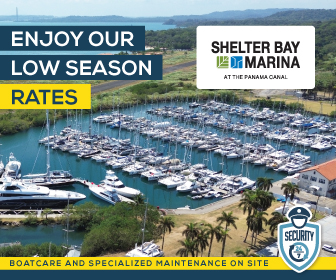Sargasso Weed Infestation Research – Citizen Science for Transatlantic Sailors
Sargasso Weed in the North Atlantic is becoming a problem for both boats and the countries facing the Atlantic (the Americas, Caribbean, Europe, and Africa). Some vessels have even become stuck in five feet thick or more of this weed matt.
Published 9 years ago, updated 6 years ago
During 2011, massive quantities of pelagic sargassum occurred throughout the


Caribbean, impacting aquatic resources, fisheries, shorelines, waterways, and tourism. A similar event occurred in 2014 and continued into 2015. This is not believed to be due to the normal cyclical variation in quantity from year to year.
In response to this issue or infestation of Sargassum, Jim Franks, Senior Research Scientist for the Gulf Coast Research Laboratory, has a posting website with instructions for volunteers to use to post valuable information.
http://gcrl.usm.edu/sargassum/sargassum.observation.form.php
This is the start of an attempt to get to Dr. Franks the critical data needed for Sargassum research. Without inputs, there cannot be a good progression of his efforts. He is welcoming input from sailors and already a great many who passaged the Atlantic in Autumn last year have contributed to the research.
Cruisers can collect and post data such as Lat/Long and description of the weed matt, e.g., stream or horizon to horizon weed on the surface. Photos are also important as GCRS tries to develop ways of satellite surveillance for an “early warning system,” and find the causing agents for this explosive weed growth. In time, with enough data on large clusters, boaters could use the resulting “weed” image to plan for passages–away from the leading edges of this weed.
For the collection process, the site offers images to identify the two major types found as pelagic (floating) weed. There is a response from the scientists for each data login, and if cruisers can collect photographs of the weed in the water matching the lat/long, it would be of great benefit as well – using the above-noted website to post observations.
New Discoveries
Besides the Sargasso that has been in the Atlantic for centuries or more, there is a suspicion a foreign variant has been introduced and may be causing this proliferation problem. So there is another program at GCRL to discover if a NEW variant (different DNA type) has created these problems, and dried samples from sailors are useful for this research.
Dr. Franks now needs a sample from a thick weed matt offshore. The program needs to know if one, two, three or more types of weed are involved, and if so, which type is the main ‘culprit.’
Samples can be collected, dried, packaged and sent to Jim Franks. To do this, take a string of weed, about 4 inches length, place it between two paper towels and press it in a book for two weeks until dried out. Then pack the dried sample sandwiched between two square pieces of cardboard and send. The mailing address for Dr. Franks is shown at the bottom of the page from the above link.
It’s hoped that transatlantic sailors on passage, can assist in this CITIZEN SCIENCE endeavor, both the observation data that can be posted on the above website or mailing in dried samples with lat/long taken from particularly large weed mats.
Related content
Atlantic Sargasso Weed: On-going Research Update
The Atlantic Ocean – The Sargassum Phenomenon is a Serious Issue for Atlantic sailors
Related to following destinations: USA
Related to the following Cruising Resources: Atlantic Crossing, Environment, Routing





If you encounter problems with the link to the reporting form in the article, the direct link is http://gcrl.usm.edu/sargassum/sargassum.observation.form.php. Please contact me if you need assistance in making a report.
Don Abrams, web support consultant at Gulf Coast Research Laboratory
don.abrams@usm.edu